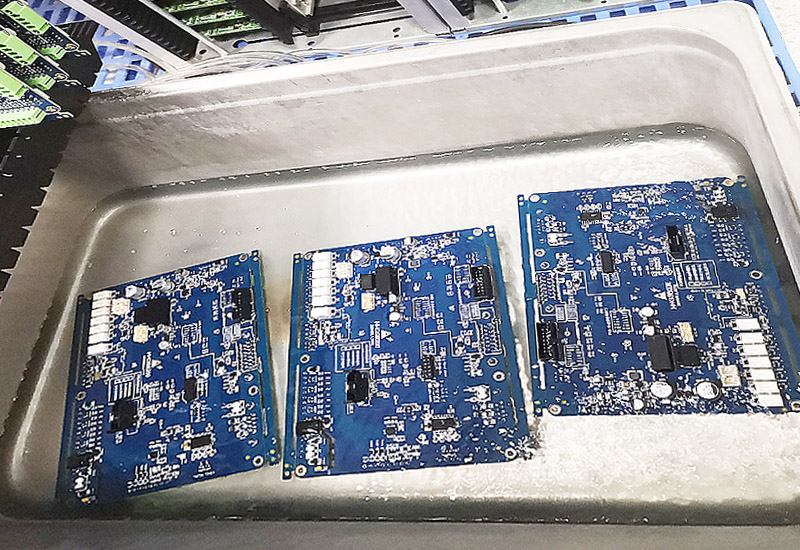
PCBA refers to the process of soldering electronic components to a printed circuit board to form a complete electronic product. With the continuous development of the electronics industry, the implementation of PCBA is of great significance for improving the quality of electronic products and reducing costs. In the electronic product manufacturing process, printed circuit board assembly is a key component. However, over time, dust, dirt, and other contaminants can accumulate on the circuit board, which can affect the proper operation of the circuit board. Cleaning PCBA circuit boards is an important step in maintaining their performance and reliability. Correct selection of cleaning agents, protecting circuit boards, selecting appropriate cleaning methods, and drying are key skills for cleaning.
Before cleaning, important parts of the circuit board (such as electrolytic capacitors and transistors, etc.) should first be protected, and components should be protected with tape or a special protective agent. In addition, care should be taken to avoid using excessive water pressure or overheated cleaning agents to avoid damaging the components on the PCB board. At the same time, prepare soft tools such as soft brushes or cotton swabs for cleaning to prevent scratching the printed circuit board surface.
For common PCBA circuit board cleaning, choose the immersion cleaning method.
The immersion cleaning method involves completely immersing the circuit board in a cleaning solution, allowing contaminants to dissolve and float to the surface.

The spray cleaning method is to use a sprayer to evenly spray an alcohol solution such as isopropyl alcohol or ethanol on the circuit board, and then scrub gently with a brush. Alcohol is relatively mild on most electronic components and circuit board materials, but caution is still required as some plastics and adhesives may be sensitive to alcohol.
Cleaning with deionized water is a very gentle method that avoids the use of chemical solvents. This method is suitable for circuit boards that are very sensitive to residual substances. The PCB assembly cleaning process may require the use of ultrasonic equipment to improve effectiveness.
For high-density PCBA circuit boards, ultrasonic cleaning removes surface dirt by generating high-frequency vibration waves in the cleaning solution. Ultrasonic waves can clean small gaps and holes by producing high-frequency vibrations.
Use an aerosol cleaning system to spray the cleaning agent on the PCBA surface in the form of aerosol. This method cleans the entire circuit board without soaking.
After cleaning, use hot air or nitrogen to quickly dry the printed circuit board. This helps prevent moisture from trapping and reduces the formation of air bubbles.

The purpose of drying is to avoid moisture remaining on the printed circuit board to prevent corrosion and short circuits on the circuit board.
Common drying methods include natural drying, hot air drying, and vacuum drying. Natural drying is to place the PCB assembly board in a well-ventilated place and allow the moisture to evaporate naturally. Hot air drying uses equipment such as a heat gun or oven for drying, but attention must be paid to temperature and time control to avoid damage caused by overheating. Vacuum drying promotes the evaporation of water by reducing pressure, but this method requires professional equipment.
Prev:Explore Further The Importance of Printed Circuit Boards
